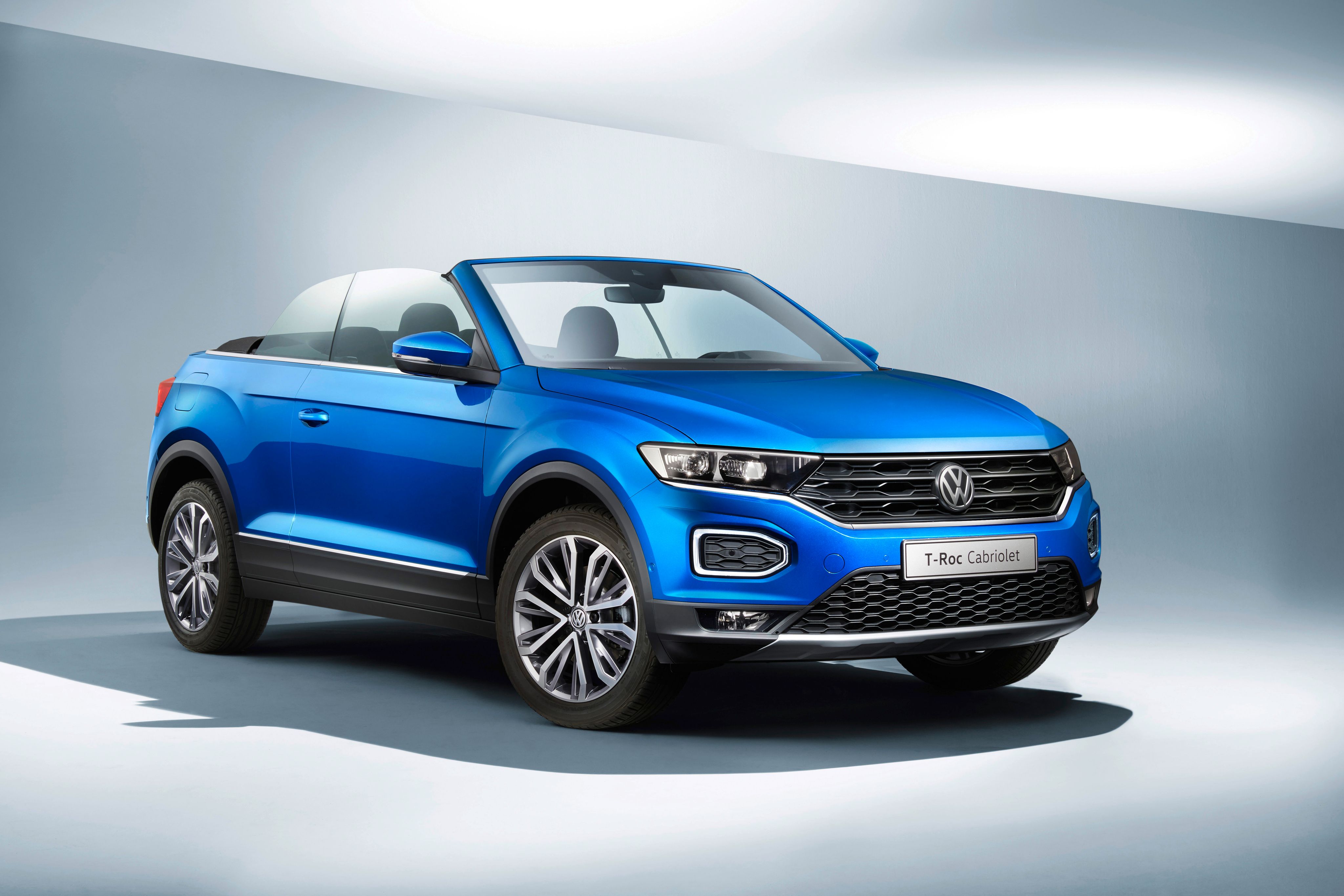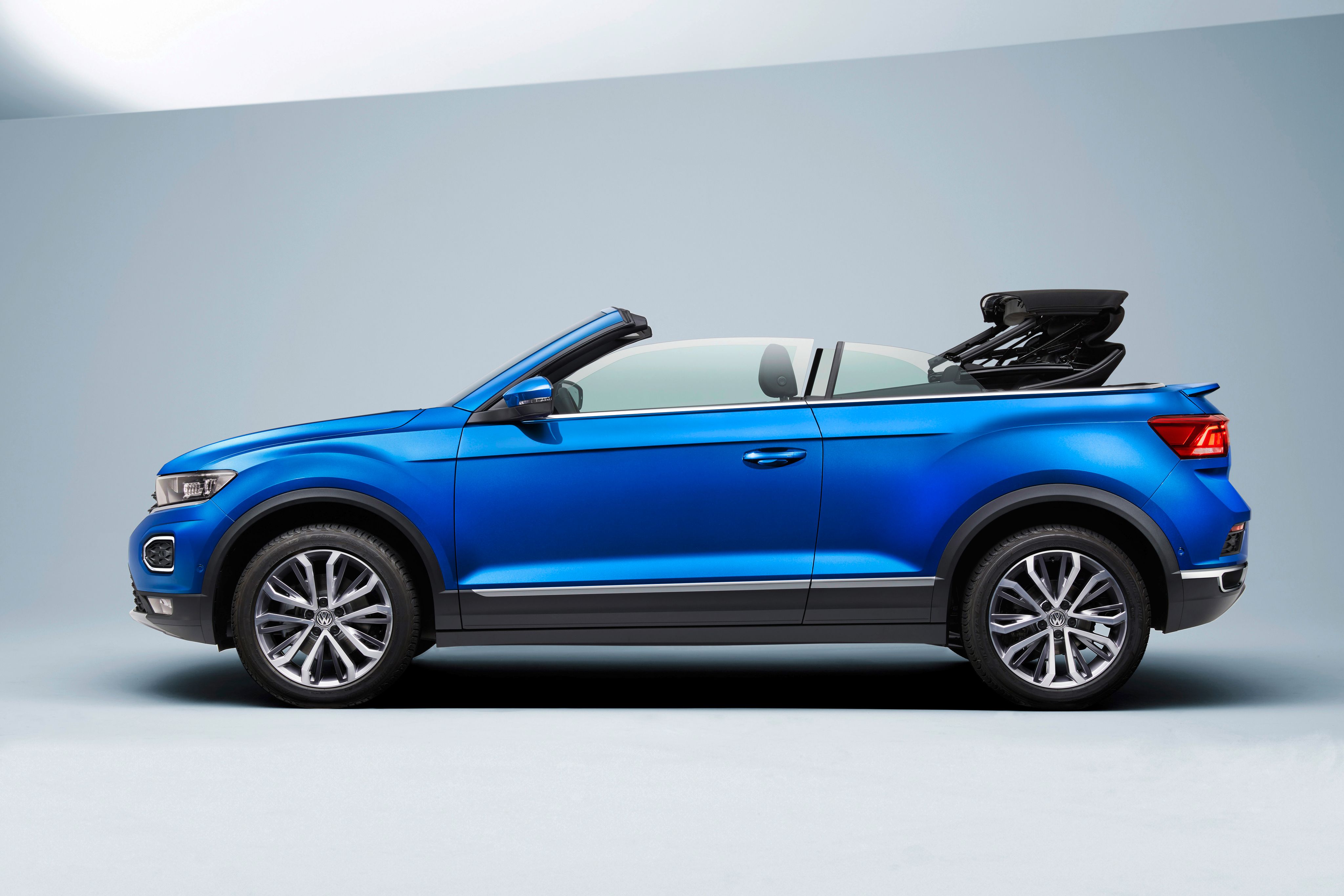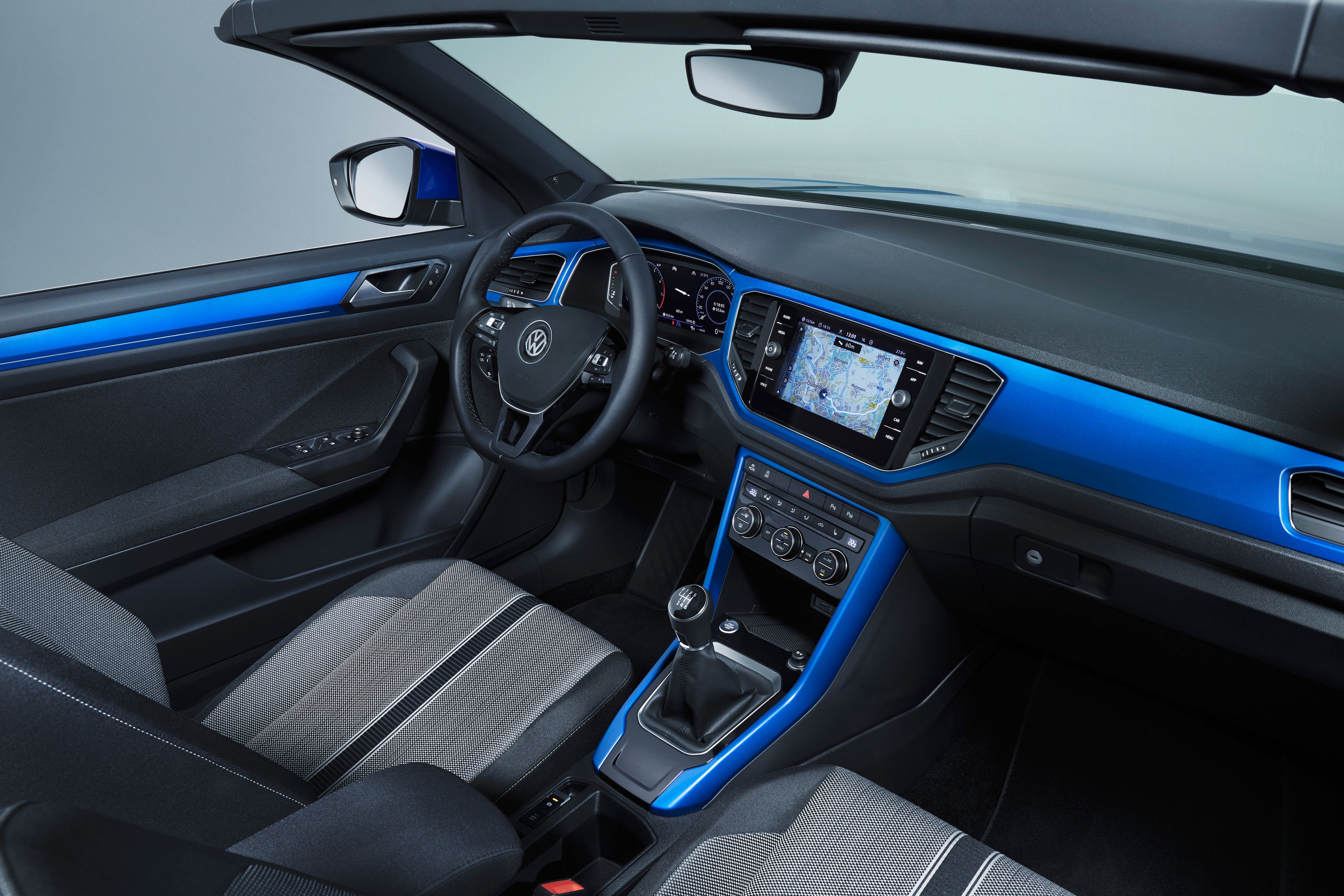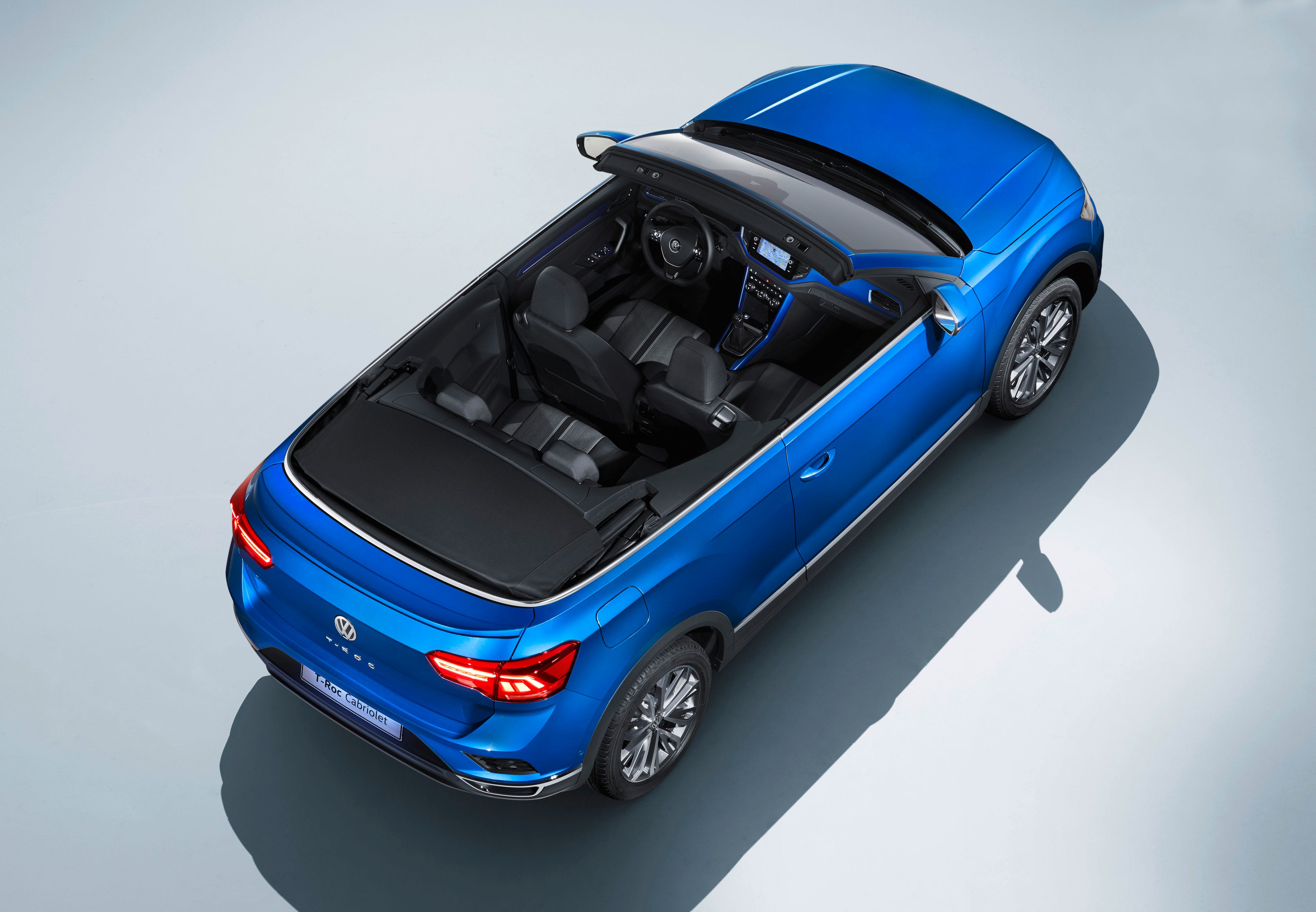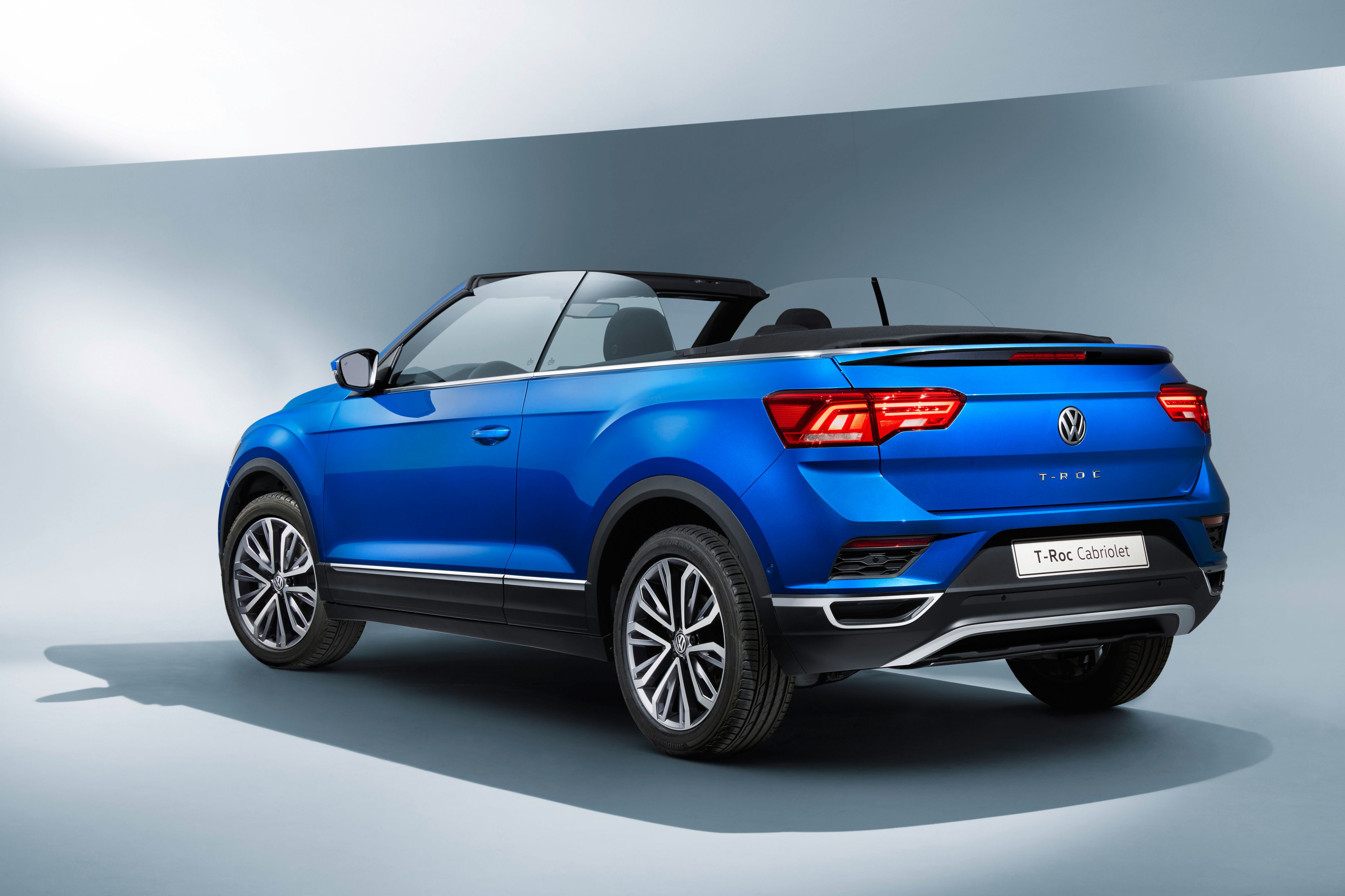Convertible SUVs are only slightly more common than hen’s teeth these days, primarily because there doesn’t seem to be a huge market for them, yet VW has taken the plunge and launched one of its own - the new T-Roc Cabriolet, a model the manufacturer promises has a lot of appeal thanks to the many qualities it blends together.
Why did VW make the 2020 T-Roc Cabriolet?
I suspect that the main reason why VW went ahead and created this topless T-Roc is that since it axed the Eos, the Golf Cabriolet and, more recently, the Beetle Cabriolet (which you can still buy, but production has ended so it’s not going to be around for a lot longer), there was room in its range for a small drop top; mix that need with the booming popularity of crossovers and you get the T-Roc Cabriolet.
VW also made it in order to at least have one convertible in its range (and it will be its only drop top for the foreseeable future) and it went for a crossover to hopefully woo some high rider buyers its way, buyers who would not have otherwise considered a cabriolet.
It looks essentially like the same vehicle as the regular five-door T-Roc crossover, but instead of the fixed metal roof, it has a folding soft top, a more steeply raked windscreen and only two (considerably larger) doors. However, it’s actually longer overall than the regular T-Roc and it also features extra bracing in many parts of its chassis in order to maintain its torsional rigidity when roofless.
Why should you consider the 2020 VW T-Roc Cabriolet?
Volkswagen seems proud to have created the first crossover cabriolet in the compact segment, promising it “offers just the right combination of strikingly extroverted design, raised seating characteristic of an SUV.” And extroverted it certainly is, to the detriment of practicality as its rear seats don’t look excessively roomy or comfortable, realistically only suitable for very short people, children or amputees (as well as the odd shopping bag you can’t be bothered to put in the trunk).
Speaking of the trunk, it too is not as big as that of the regular T-Roc crossover whose quoted cargo capacity is 445 liters (for front-wheel drive examples). In the case of the T-Roc Cabriolet, that shrinks to 284 liters and it shrinks further still (by 161 liters) when the soft top is down and stowed away in the upper part of the trunk.
The top takes an impressive nine seconds to electrically erect or fold away and this can be done at speeds of up to 30 km/h (19 mph). Its shape is definitely reminiscent of the top VW created for the Golf Convertible and with it up and in place, the T-Roc convertible looks a lot like its lower-riding predecessor. The roof can be put up or down both by pressing a dedicated switch on the center console, or from outside the vehicle, by pressing and holding a button on the key fob.
The obvious main advantage of buying a T-Roc, and the reason you’d put up with its less practical character, is the open-top driving experience. Convertibles always have a bit of extra cool factor over their fixed-top counterparts and the topless T-Roc is no exception - I’d even go so far as to say it doesn’t look bad at all; nowhere near as odd as you’d think it would be if you only heard about it and not having actually seen it.
It’s not what you would call pretty, but it is by no means offensive, and it’s certainly a bit more understated and under the radar compared to the noticeably flashier Range Rover Evoque Convertible. In that car, you always look like you’re showing off, whereas in the T-Roc convertible, there is a chance people will just think you’re enjoying the sunshine and wind-through-your-hair experience.
What’s under the 2020 VW T-Roc Cabriolet’s skin?
Just like the regular T-Roc, the drop-top version is underpinned by the same MQB platform used to underpin everything from the Audi A1 all the way up to the Passat. And as is the case with any car, chopping the top completely off a vehicle seriously affects its structural rigidity; the T-Roc cabriolet is no exception. In order to save weight, and because it was not deemed necessary, there is no cover over the top once it’s stowed away.
|
|
ids=855687,855688> |
VW says it has strengthened it in key areas via the use of four cross braces and a front cross strut, areas such as its doors, side structure, underbody and the windscreen frame. And the chassis on which it rides is slightly different compared to that of the regular T-Cross because it is longer - wheelbase is extended by 37 millimeters while overall length grows by a total of 34 millimeters. Its total length is 4,268 millimeters, width without mirrors is 1,811 millimeters and overall height is 1,522 millimeters.
VW T-Roc Cabriolet Size
|
Length |
4,268 mm |
|
Width (without mirrors) |
1,811 mm |
|
Height |
1,522 mm |
|
Wheelbase |
2,632.9 mm |
Two TSI turbo engines are offered to power the T-Roc Cabriolet: a 1.0-liter three-pot with 113 horsepower mated to a six-speed manual gearbox, or a 1.5-liter with 148 horsepower also hooked up to a six-speed manual (the seven-speed dual-clutch automatic can be had at extra cost). No all-wheel drive version is offered for the T-Roc convertible.
VW doesn’t mention any performance or efficiency numbers for either power plant, but in the case o the regular T-Roc, the 1.0-liter with the six-speed manual sprints to 100 km/h (62 mph) in 10.1 seconds and returns 5.3 l/100km (45 mpg U.S. / 54 mpg U.K.) and the 1.5-liter with the DSG has a benchmark sprint time of 8.4 seconds and returns a claimed 5.4 l/100km (43.5 mpg U.S. / 52 mpg U.K.). With the extra bracing and the weight of the folding roof mechanism, the T-Roc Cabriolet is a bit heavier than the regular crossover, so expect it to be a bit slower and thirstier.
|
|
ids=855689,855690> |
The regular T-Roc drivers very well for a crossover in its class (in a class populated by very talented rivals), but when a vehicle is turned into a convertible, the extra weight and poorer overall torsional rigidity will negatively affect its road manners. But this won’t be of huge importance because I’m sure the T-Roc Cabriolet will be bought to cruise around and enjoy the sun in, not for hooning around and canyon carving.
When can you have a 2020 VW T-Roc Cabriolet?
Well, Volkswagen has announced that the production version of the T-Roc will be officially revealed at the 2019 Frankfurt motor show that runs from September 12 - 22 and that its market debut will take place in the spring of 2020. Buyers will be able to opt for two packs that will affect the look of the vehicle: the first is Style, which, according to VW, “stands for design and individuality.” It features for available color themes for the interior, standard mood lighting and 17-inch rims with a distinctive lacquered finish; optionally available for this pack are two distinct leather packages too.
The other pack is R-Line and its aim is to make give T-Roc Cabriolet’s look a sporty twist. It only really adds standard fog lights and sports seats, but it makes several R-Line-specific pieces of trim available (both interior and exterior), as well as R-Line badges. VW says this pack also has “sports-tuned running gear,” but it doesn’t specifically say what that entails. Also specific to the R-Line pack is “the progressive steering with speed-dependent steering control.”
It’s way too early for model pricing to be announced, and I don’t think it will be revealed even at the vehicle’s public debut, in Frankfurt. Pricing will most likely be revealed sometime before it hits showrooms, early next year.
Does the 2020 VW T-Roc Cabriolet have any rivals?
Well, no, not any direct rivals. In fact, there’s only one other vehicle that’s similar, albeit slightly bigger and considerably more posh and expensive - the Range Rover Evoque convertible. It promises not only superior luxury, compared to the VW, but also better comfort and, considerably better off-road credentials too (because even though it’s the baby Range, it’s still excellent off the beaten path).
The Evoque convertible also comes with more powerful engines with up to 240 horsepower and the advanced all-wheel drive system that allows it to go where no T-Roc ever could. However, its roof mechanism takes twice as long as the T-Roc’s to retract (18 seconds) and even more to go up (21 seconds), but it does get some points back because its roof can be operated at speeds of up to 30 mph (48 km/h). Space in the trunk not as good as that of the T-Roc Cabriolet - the Evoque cabrio only musters 251 liters, making the (smaller) Volkswagen’s numbers start to sound more impressive.
Range Rover Evoque aside, there are no other new models on sale now to challenge the T-Roc Cabriolet. The only other model that follows a similar philosophy (five-door SUV turned two-door convertible high-rider) is the Nissan Murano CC. However, that model was only sold between 2011 and 2014 and was eventually phased out due to poor sales and generally low public interest for it - there were a fair few people who even ridiculed the simple fact that it was even made at all. You can now pick one up second hand for quite a reasonable price, so it’s safe to assume that used Murano CC examples might rival brand new T-Roc Cabriolets.

